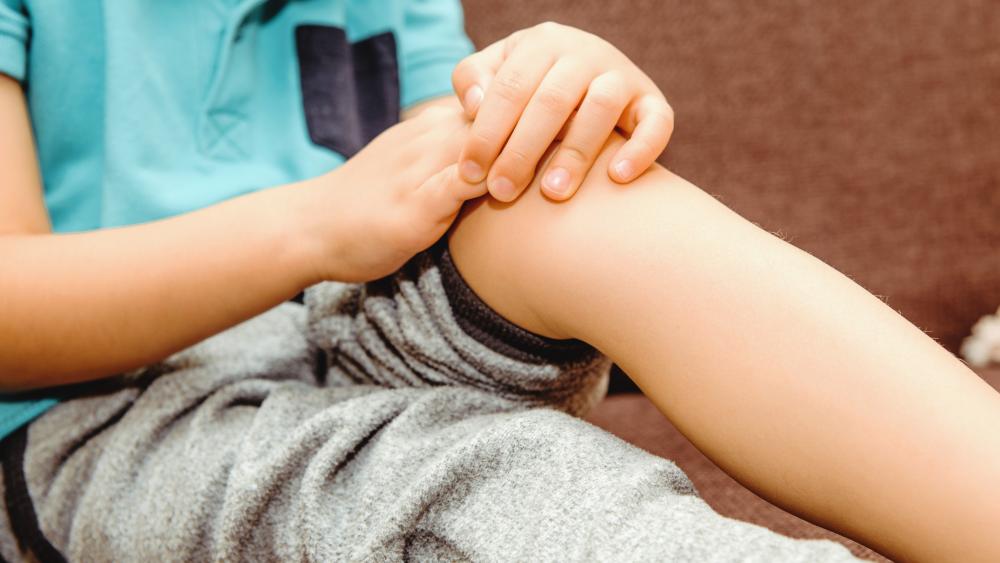




Family Health
Juvenile Arthritis: Early Diagnosis and Treatment Are Key to Helping Kids Be Kids
Published: July 13, 2021

Many people associate arthritis with aging. And while it’s true that significantly more people over 65 have doctor-diagnosed arthritis, it’s not only seniors who develop it. People of all ages can suffer from arthritis, a term that actually describes more than 100 different conditions.
The most common, osteoarthritis, affects over 32 million U.S. adults and can occur when cartilage between bones is damaged or breaks down.
But there are also several types of arthritis that children can develop.
Juvenile Arthritis Basics
Juvenile arthritis, also known as childhood arthritis, affects nearly 300,000 U.S. children and teenagers. It isn’t a common illness, but medical providers see if often enough that they need to be aware of its symptoms and how to manage it.
We don’t know what causes juvenile arthritis, but it may be a result of immune system problems that cause inflammation in the body. The condition may last for months or years, or be lifelong.
Like arthritis, juvenile arthritis is a general term and encompasses a number of conditions that can affect the joints, eyes, skin and internal organs. The most common of these conditions is juvenile idiopathic arthritis (JIA), of which there are several types.
Symptoms of JIA include:
- Joint pain, stiffness, swelling, tenderness, redness or warmth
- Blurred vision or dry eyes
- Fatigue
- Fever
- Loss of appetite
- Rash
The symptoms of JIA and other types of juvenile arthritis aren’t always easily recognizable. Initial symptoms can be mild, and the majority of children with it don’t have the classic joint pain, joint swelling or fever. The pain they experience may be intermittent and progress over time.
My general rule: If a child has pain or symptoms that interfere with their ability to play and keep up with others – limping when they run, stopping play because of pain, etc. – they should see their pediatrician or primary care provider.
Treatment
It’s important to identify and treat juvenile arthritis as early as possible. Early treatment can prevent it from progressing and causing long-term joint damage or damage to organ systems, such as diseases of the eye.
If your child has symptoms of juvenile arthritis, their provider may use a physical exam, X-rays and laboratory tests to identify the disease and rule out other conditions. If juvenile arthritis is suspected, you’ll likely be referred to a pediatric rheumatologist and an eye doctor adept at screening for eye disease.
Treatment for juvenile arthritis may include a combination of:
- Exercise
- A healthy diet that encourages a child’s development and eases inflammation
- Medication to control disease activity or relieve symptoms
- Physical or occupational therapy
- Therapies such as acupuncture, massage, meditation, deep breathing, guided imagery or progressive muscle relaxation
Rarely, children with juvenile arthritis need surgery to address severe pain or joint damage.
There is no known cure for juvenile arthritis, but there is good news: The right treatment plan can help prevent long-term issues and even lead to remission. In fact, many people with juvenile arthritis lead completely normal lives with no one aware they have a chronic illness.
We’re Here To Help
Juvenile arthritis has the potential to keep kids from being kids. But with proper treatment and a positive attitude, the condition usually won’t limit them from taking part in the activities they enjoy.
Again, the key is diagnosing juvenile arthritis early. If you have questions about juvenile arthritis or anything relating to your child’s health, don’t hesitate to contact your pediatrician or family medicine provider. We’re happy to do all we can to keep kids happy and healthy.
More Resources
- Explore the Arthritis Foundation’s resources on juvenile arthritis.
- Is your child’s weight gain normal? Read what a Methodist pediatrician has to say.
- Brush up on these five tips for summer pool safety.
- Follow Methodist on Facebook, Twitter and Instagram.


